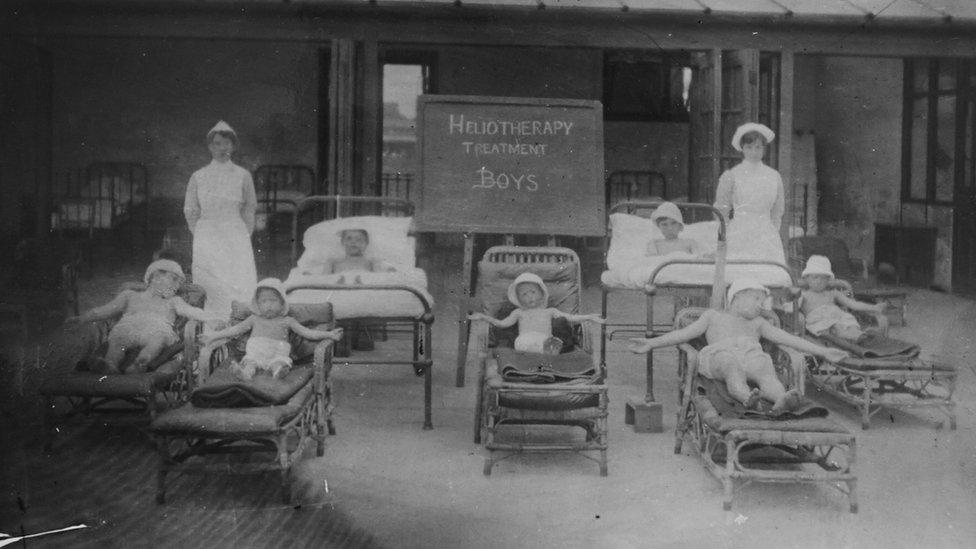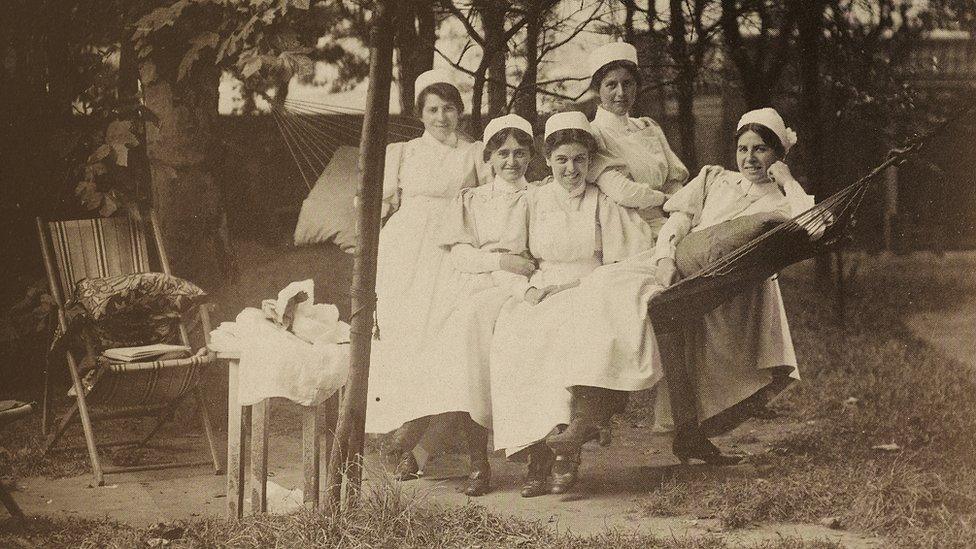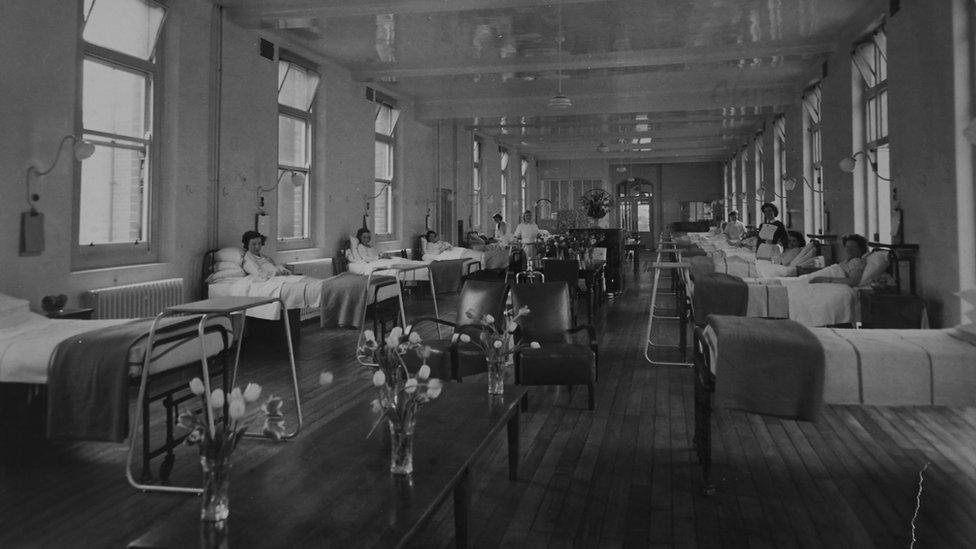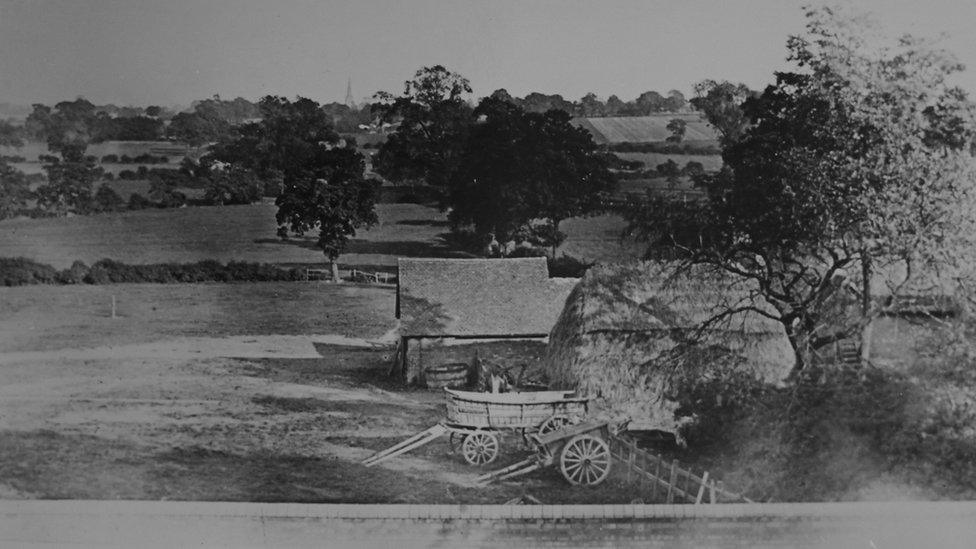Birmingham's Heartlands Hospital: 125 years seen through the lens
- Published

Heliotherapy or exposure to the rays of the sun was part of the treatment given to tuberculosis patients at the hospital in the early 1900s
A new exhibition reflects on 125 years of an historic hospital, revealing memories of Victorian treatments and a visit from Princess Diana.
Heartlands Hospital, built in 1895, is marking its milestone anniversary with photos from across the decades.
Over the years the Birmingham hospital has treated patients with typhoid and scarlet fever in Victorian England to Covid-19 in the 21st Century.
It is famed for treating the world's last recorded smallpox case in 1978.
The question of how Janet Parker, a 40-year-old medical photographer, contracted the disease remains a mystery today.

Nurses relaxing at the hospital
Starting off as an infectious disease hospital, the site expanded over the decades to include an A&E unit, renal and immunology departments and a cystic fibrosis centre.
In 1993, Princess Diana came to Birmingham to officially open The Princess of Wales Maternity Unit at Heartlands.
In the 28 years since, the hospital estimates more than 150,000 babies have been delivered in the unit.

Princess Diana visited the hospital in 1993 to open The Princess of Wales Maternity Unit
When the hospital, based in the Bordesley Green area in east Birmingham, opened in the 19th Century it was named City Hospital, Little Bromwich.
The name has changed over the years to East Birmingham District Hospital in 1963 before gaining its current name in 1992.

The hospital was primarily built as an infectious disease hospital and opened a new virus laboratory in 1959
Dr Martin Dedicoat, Consultant Physician for Infectious Diseases at Heartlands, said reflecting on the hospital's history revealed the similarities between now and the 19th Century.
"It is poignant that 125 years on the hospital and staff have had to rise to the challenge of the Covid-19 pandemic," he said.
"I'm incredibly proud to work at this hospital, primarily because of the people I work alongside and the local communities we serve.
"Whilst many other things have changed with time, Heartlands' personality and connection with its patients has not."

The Metabolic Unit at the hospital in 1956 which was used to pioneer medical research as well as treatment including a trial use of the antibiotic streptomycin to treat tuberculosis meningitis
The anniversary is being marked this autumn by the University Hospitals Birmingham NHS Foundation Trust.
People have been asked to send in their photographic memories of the hospital.

An operation being carried out at the hospital at an unknown date
With the coronavirus pandemic restricting how the 125th anniversary can be marked, the NHS trust has said the photographs will be turned into a display for medical staff at the hospital while the videos will be stitched together for social media.

A view looking east over the hospital walls in the 1920s towards Yardley Green Church

The Yardley Green Road Sanatorium opened in 1901 before merging with Little Bromwich Hospital in 1962

An aerial view of the hospital in 1921

Follow BBC West Midlands on Facebook, external, Twitter, external and Instagram, external. Send your story ideas to: newsonline.westmidlands@bbc.co.uk , external